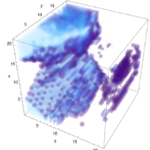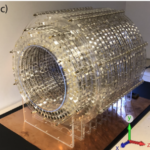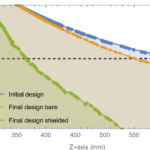The HISTO-MRI Project has finished. Some relevant scientific and technological outputs indicating its success are: 15 scientific publications; 4 patents; > 40 conference contributions; 3 new MRI scanners; a prepolarizer module; a Peripheral Nerve Stimulation (PNS) measurement setup; a new design for a pulsed power supply; images with 125 um resolution of a mouse brain; the first ever dental images at low field; in vivo images and time mapping on a low cost 50 mT scanner; new techniques for magnet, gradient and rf engineering; pulse sequences for highly efficient encoding or slice selection with (zero echo time) ZTE sequences; improved reconstruction methods; a spin-off company (PhysioMRI Tech S.L.); and at least six new opportunities for technology transfer, one which has already won an Innovation Launchpad grant.
Category: News
HISTO-MRI Project – Third year review
 The HISTO-MRI Project has successfully completed its third year. The Consortium has designed a 0.5 T pre-polarization setup, renovated the rf system, completed the PNS setup, finished the first ultra-fast high power supply, continued the development of the work bench software, implemented advanced reconstruction algorithms, obtained the world first images of hard and soft biological tissues at low fields, invented and patented VIEWS, and moved the HISTO-MRI scanner to a new laboratory infrastructure at CSIC.
The HISTO-MRI Project has successfully completed its third year. The Consortium has designed a 0.5 T pre-polarization setup, renovated the rf system, completed the PNS setup, finished the first ultra-fast high power supply, continued the development of the work bench software, implemented advanced reconstruction algorithms, obtained the world first images of hard and soft biological tissues at low fields, invented and patented VIEWS, and moved the HISTO-MRI scanner to a new laboratory infrastructure at CSIC.
New article by T. O’Reilly and A. Webb
 The paper titled “Deconstructing and reconstructing MRI hardware” by T. O’Reilly and A. Webb, has been published in Journal of Magnetic Resonance. This article presents a discussion on three topics concerning future hardware development for clinical MRI: Hardware changes intended to simplify workflow and increase throughput; Developments in cryogen-free magnet technology; imple systems that are low-csost, robust, simple to operate and repair, and capable of working in developing countries. (doi: 10.1016/j.jmr.2019.07.014)
The paper titled “Deconstructing and reconstructing MRI hardware” by T. O’Reilly and A. Webb, has been published in Journal of Magnetic Resonance. This article presents a discussion on three topics concerning future hardware development for clinical MRI: Hardware changes intended to simplify workflow and increase throughput; Developments in cryogen-free magnet technology; imple systems that are low-csost, robust, simple to operate and repair, and capable of working in developing countries. (doi: 10.1016/j.jmr.2019.07.014)
New patent: VIEWS
 We have filed a patent for a new “Method and apparatus for MRI with time-varying inhomogeneous magnetic fields”, Patent Application Number P201930719. Here, we disclose VIEWS (Volumetric Image Encoding Without k-Space), which encodes and reconstructs spatial information with high efficiency.
We have filed a patent for a new “Method and apparatus for MRI with time-varying inhomogeneous magnetic fields”, Patent Application Number P201930719. Here, we disclose VIEWS (Volumetric Image Encoding Without k-Space), which encodes and reconstructs spatial information with high efficiency.
New article by T. O’Reilly et al.
 The paper titled “Three-dimensional MRI in a homogenous 27 cm diameter bore Halbach array magnet” by T. O’Reilly et al., has been published in Journal of Magnetic Resonance. This article presents a low cost, head-only, homogenous Halbach magnet array with the potential for paediatric neuroimaging in low-resource settings. (doi: 10.1016/j.jmr.2019)
The paper titled “Three-dimensional MRI in a homogenous 27 cm diameter bore Halbach array magnet” by T. O’Reilly et al., has been published in Journal of Magnetic Resonance. This article presents a low cost, head-only, homogenous Halbach magnet array with the potential for paediatric neuroimaging in low-resource settings. (doi: 10.1016/j.jmr.2019)
HISTO-MRI Project extension
 The HISTO-MRI has encountered unexpected challenges in the development of the ultra-fast power supplies which will provide high spatial resolution while avoiding Peripheral Nerve Stimulation. We have now found a solution but this will imprint a slight delay on the original schedule. On the bright side, we have also encountered unexpected exciting findings. In particular, we will be able to test the effects of dynamic magnetic fields on human patients, which opens the door to exploring new uncharted regimes of operation for MRI. We have therefore requested a 1-year project extension, which the European Commission has granted.
The HISTO-MRI has encountered unexpected challenges in the development of the ultra-fast power supplies which will provide high spatial resolution while avoiding Peripheral Nerve Stimulation. We have now found a solution but this will imprint a slight delay on the original schedule. On the bright side, we have also encountered unexpected exciting findings. In particular, we will be able to test the effects of dynamic magnetic fields on human patients, which opens the door to exploring new uncharted regimes of operation for MRI. We have therefore requested a 1-year project extension, which the European Commission has granted.
HISTO-MRI Project – Second year review
 The HISTO-MRI Project has completed its second year. The Consortium has finalized completed the magnetic system (main magnet, gradient and rf), has a preliminary working version of the ultra-fast high power supplies for the gradients, have developed significantly a general imaging and reconstruction software platform, imaged the hardest human tissues at 0.3 T, designed a Peripheral Nerve Stimulation experiment and invented and patented MASSIF.
The HISTO-MRI Project has completed its second year. The Consortium has finalized completed the magnetic system (main magnet, gradient and rf), has a preliminary working version of the ultra-fast high power supplies for the gradients, have developed significantly a general imaging and reconstruction software platform, imaged the hardest human tissues at 0.3 T, designed a Peripheral Nerve Stimulation experiment and invented and patented MASSIF.
Welcome Lasthenis Angelidakis

We warmly welcome Lasthenis Angelidakis, who joins i3M’s MRILab. He did his undergraduate studies at the University of West Attica, and his postgraduate studies in Biomedical Engineering at the Cyprus University of Technology. Lasthenis will investigate Peripheral Nerve Stimulation effects in the scope of the HISTO-MRI Project.
New patent: MASSIF

We have filed a patent for a new “Method and apparatus for MRI using fast magic-angle rotation of spatial encoding magnetic fields”, Patent Application Number P201930015. Here, we disclose MASSIF (Magic Angle Spinning of Spatially Inhomogeneous Fields), which will enable beyond-ultra-fast imaging and combined hard and soft tissue imaging.
New article by J. P. Rigla et al.
 The paper titled “Low-Field Rampable Magnet for a High-Resolution MRI System” by J.P. Rigla et al., has been published in IEEE Transaction on Magnetics. This article presents the design and experimental characterization of an electromagnet rampable up to 1 T and tailored to meet the demands of a magnetic resonance imaging (MRI) system conceived for spatial resolutions at the level of tens of microns. (doi: 10.1109/TMAG.2019.2950891)
The paper titled “Low-Field Rampable Magnet for a High-Resolution MRI System” by J.P. Rigla et al., has been published in IEEE Transaction on Magnetics. This article presents the design and experimental characterization of an electromagnet rampable up to 1 T and tailored to meet the demands of a magnetic resonance imaging (MRI) system conceived for spatial resolutions at the level of tens of microns. (doi: 10.1109/TMAG.2019.2950891)